Affiliate links on Android Authority may earn us a commission. Learn more.
How to set up and use text-to-speech on Windows 10 and 11
Published onJune 30, 2023
The Windows text-to-speech feature is an essential accessibility tool for the visually impaired. It’s also helpful if you have reading disabilities like dyslexia or are an auditory learner. The feature reads out all the text on the screen, tells you what apps and app windows you’re opening, and other important information you’ll need to know. Windows has a built-in text-to-speech feature called Windows Narrator, so you don’t have to worry about downloading or installing anything. Here’s what you need to know about Windows Narrator and how to set up and use text-to-speech on Windows 10 and 11.
QUICK ANSWER
To use text-to-speech on Windows 10 and 11, go to Settings > Ease of access > Narrator (on Windows 10) or Settings > Accessibility > Narrator (on Windows 11) and toggle on Narrator. You can enable or disable different settings to customize the experience to your liking.
JUMP TO KEY SECTIONS
What is Windows Narrator?
Narrator is Microsoft’s text-to-speech and screen reader feature that comes built-in on Windows 10 and 11. It reads everything on your screen, including websites, emails, documents, and more. It also tells you every action you perform, like opening and closing apps and browser tabs and enabling or disabling features in the settings menu.
Windows Narrator is designed for the visually impaired, but anyone can use it. There are plenty of ways to customize the experience as well. You can set what kind of content is read to you and change the voice, language, reading speed, and other settings.
How to enable text-to-speech on Windows 10 and 11
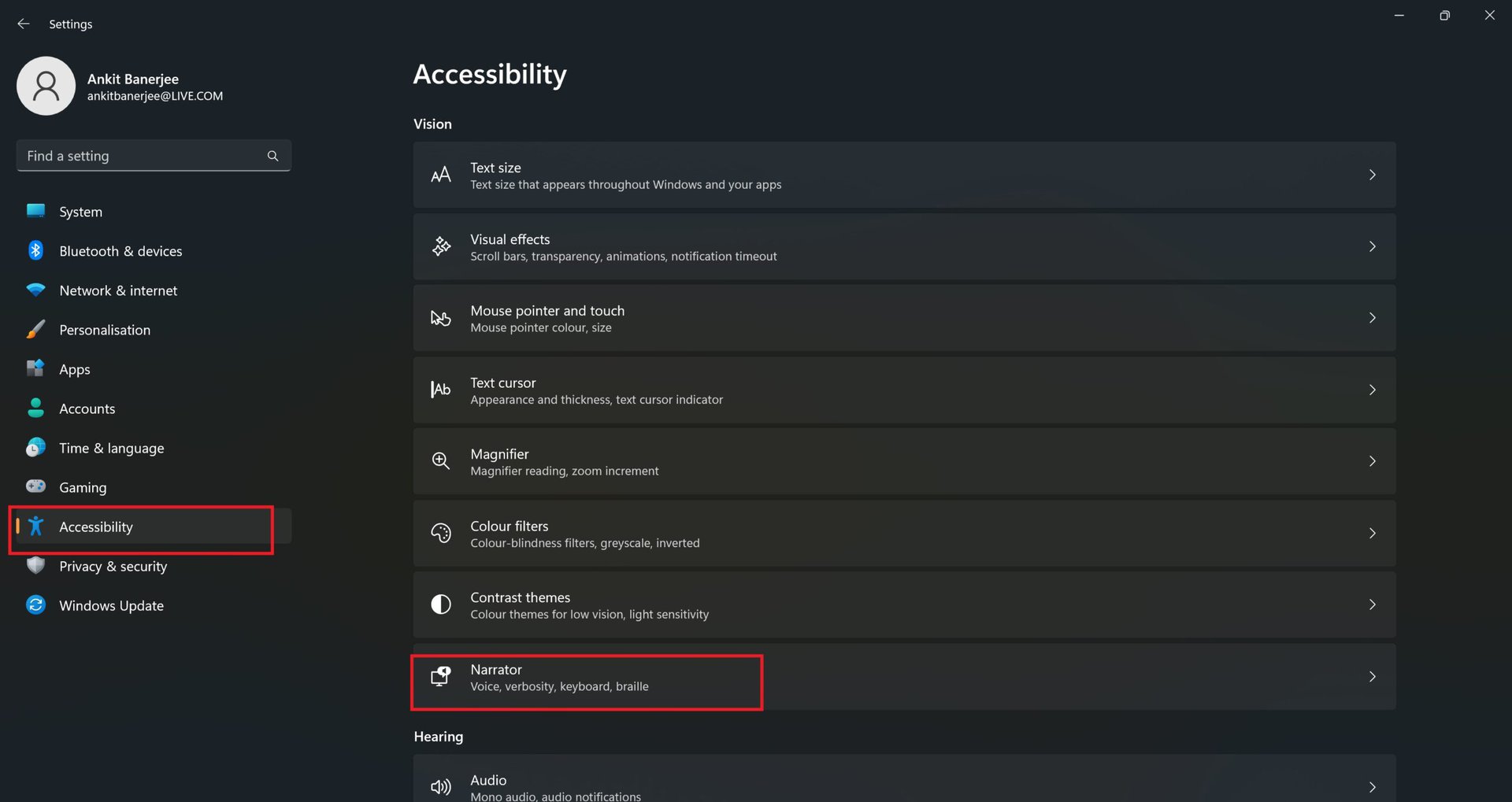
Windows Narrator is available on Windows 10 and 11 and works the same way on both platforms. The Narrator settings menu is slightly different on Windows 11 and has a few more features, especially regarding voice and language selection. However, the shortcuts and general features are the same.
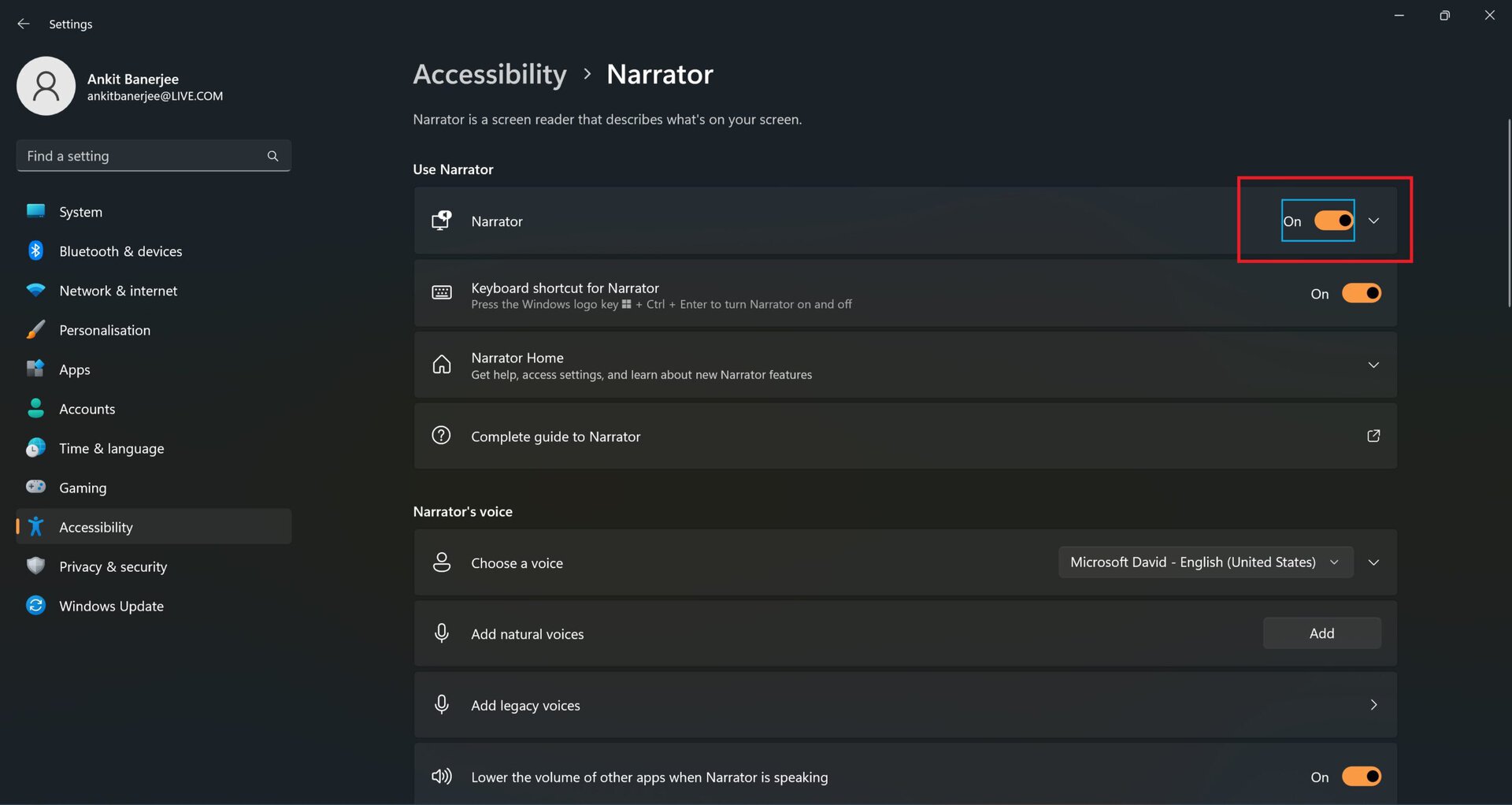
To enable text-to-speech on Windows, go to Settings > Ease of Access > Narrator (on Windows 10) or Settings > Accessibility > Narrator (on Windows 11) and enable Narrator.
As soon as you do, you should hear the default voice telling you that you have enabled the feature. If you want visual confirmation, there will be a blue box to show what page, paragraph, line, or word the Narrator is reading.
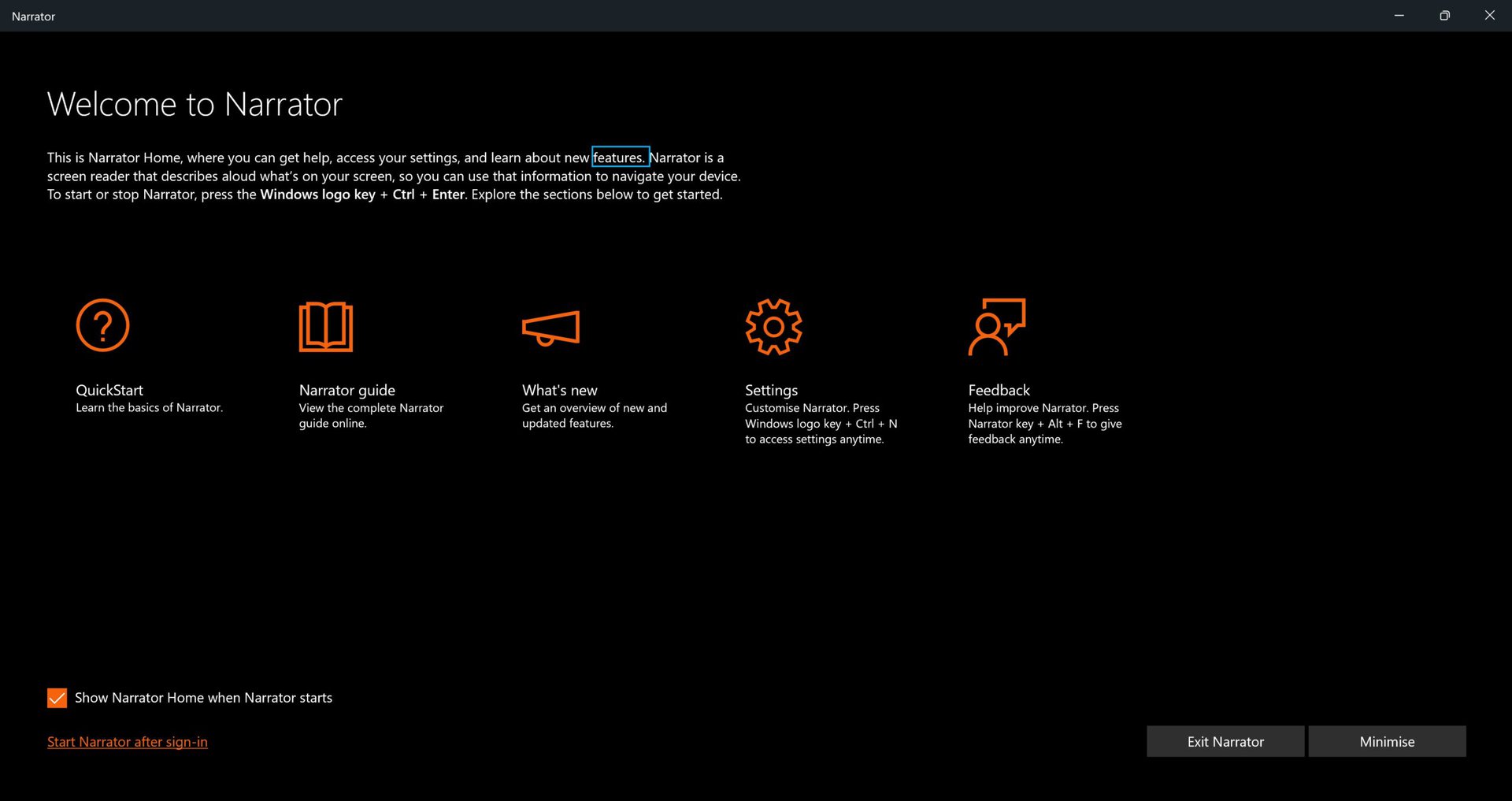
The Narrator Home app will also launch automatically. It has useful features for a first-time user, including a quick start guide, a complete guide, and one-click access to the Narrator settings. You can also use the Feedback button if you come across app issues.
You can minimize the Narrator Home page and uncheck the box next to Show Narrator Home when Narrator starts if you want to disable it. It’s best to do so only after you’ve set up the text-to-speech feature the way you like it.
Manage text-to-speech settings in Windows 10 and 11
Just enabling the text-to-speech feature might not be enough to get the desired experience. With the default settings, Narrator might be unable to find or read what you need, and navigating a web page or document can be a little tricky.
Windows Narrator start-up options
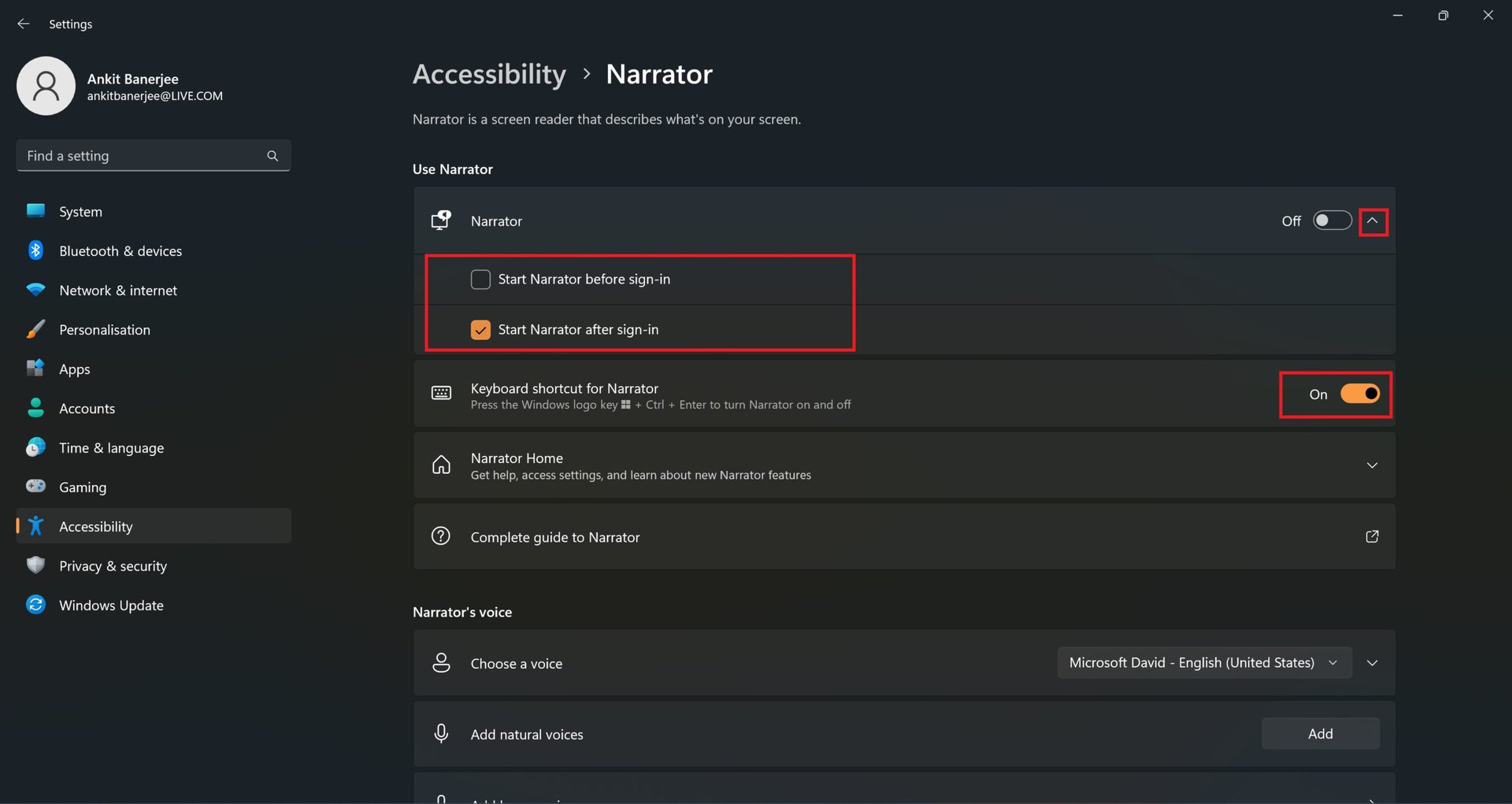
The first thing to do is to ensure that Narrator launches when you want it to. On Windows 10, check or uncheck the boxes under the Start-up options for Start Narrator after sign-in for me or Start Narrator before sign-in for everyone if you have multiple user accounts on the same computer or want to use Narrator in the login screen. You’ll find the options on Windows 11 by expanding the menu under Narrator.
You can also use a keyboard shortcut to turn the Narrator on or off. Toggle the setting in the Start-up options (Windows 10) or Use Narrator section (Windows 11) to use the Windows logo key + Ctrl + Enter shortcut.
Verbosity settings
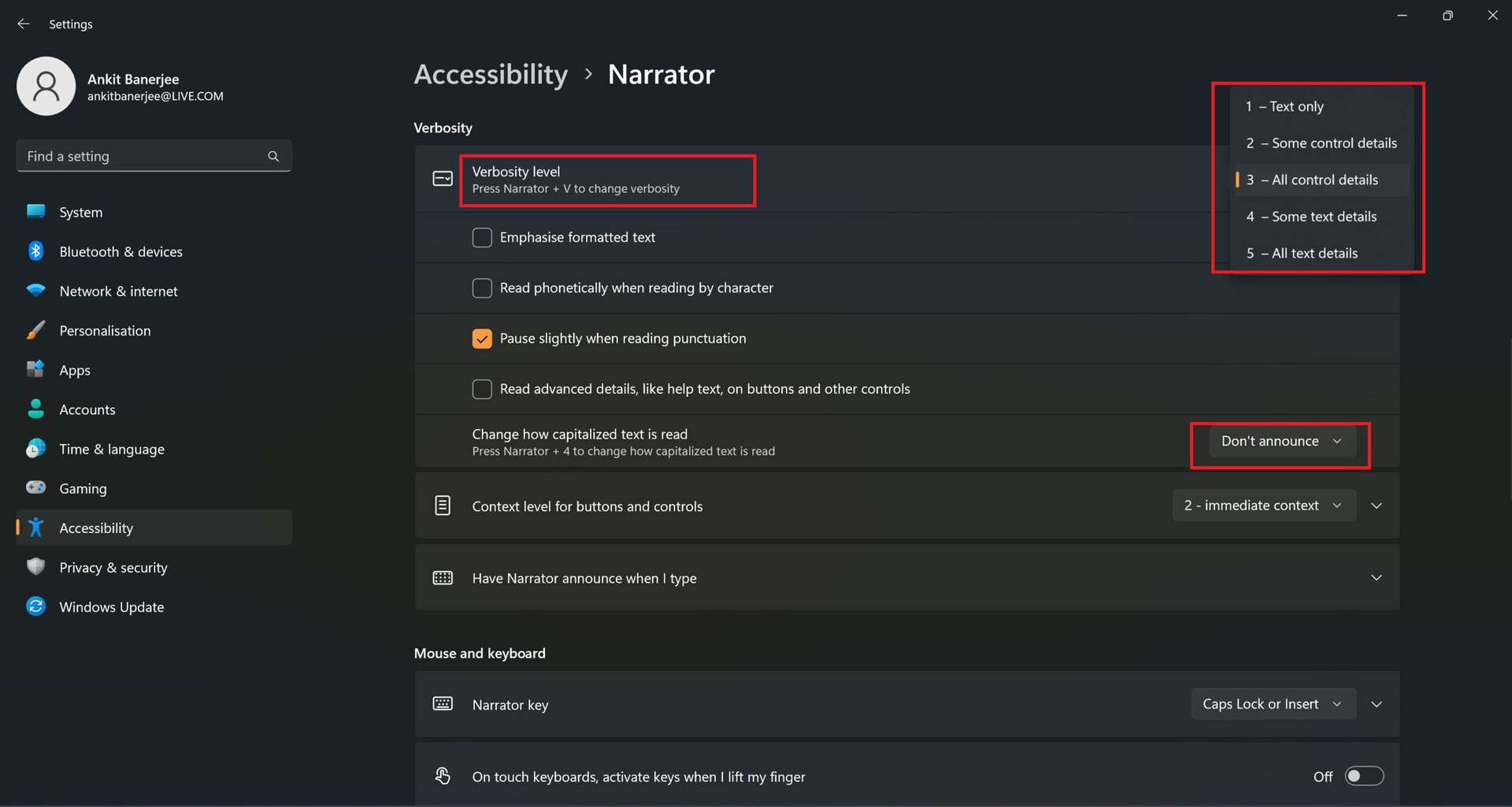
Verbosity settings let you adjust what details the Narrator reads aloud. The default setting of 3 – All control details will include information about all buttons, windows, browser tabs, and apps you open and use. If you want the feature only to read text, you can change it to All text. You’ll find these settings under Verbosity on Windows 11 and Change what you hear when reading or typing on Windows 10.
You can further customize verbosity by enabling or disabling the options to emphasize formatted text, pause when reading punctuation, and read advanced details like the help text on buttons and controls. There’s also a setting to change how Narrator reads capitalized text — with no change (Don’t announce), increased pitch, or the app saying “Cap.”
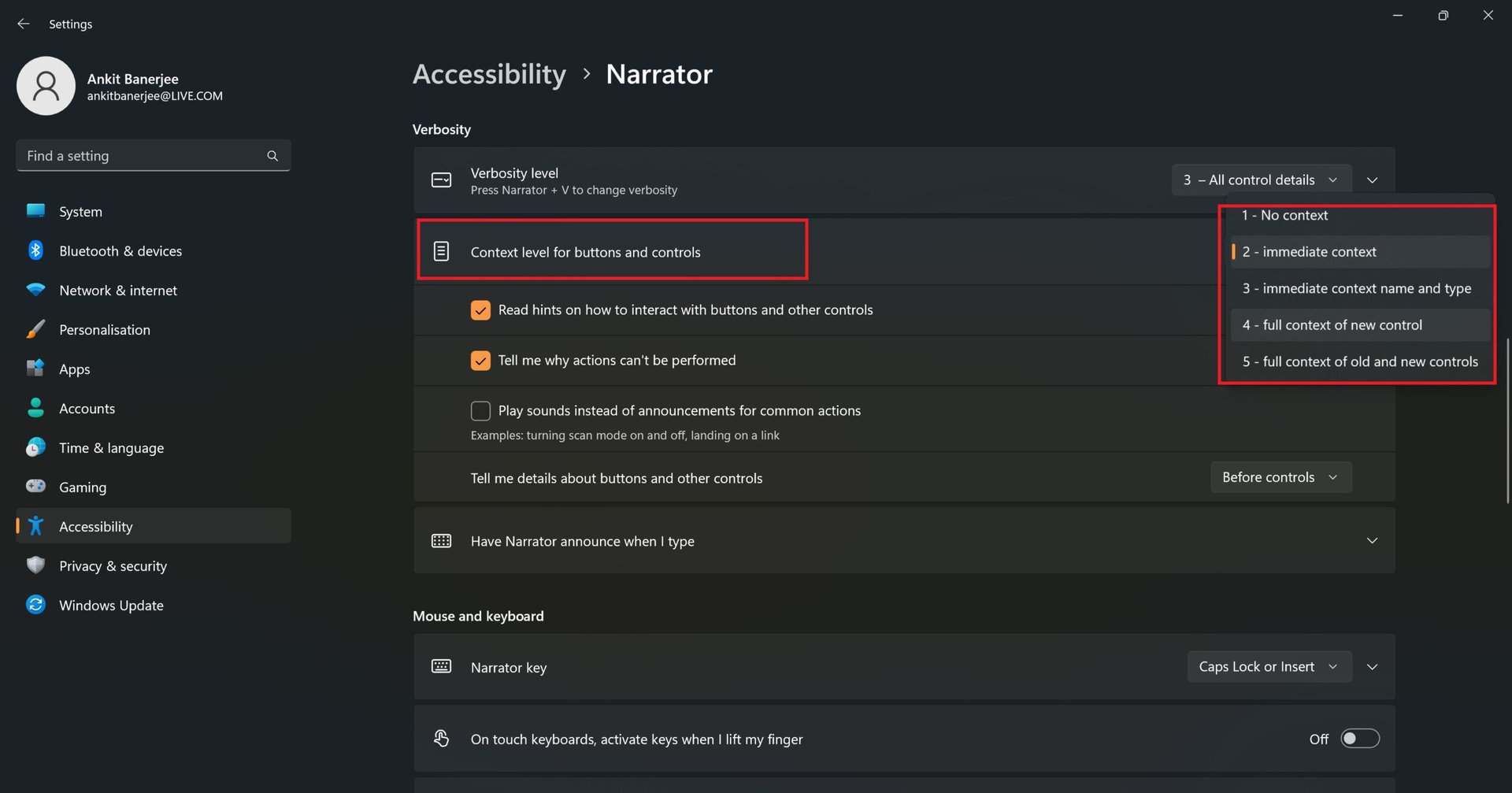
If you have control details enabled, you can set how much information the Narrator will provide about buttons and controls. It’s set to Immediate context by default, but you can change it to Full context for new and old controls to hear every detail. You can also enable Read hints on how to interact with buttons and controls and Tell me why actions can’t be performed if you want information on how to use buttons on an app or web page.
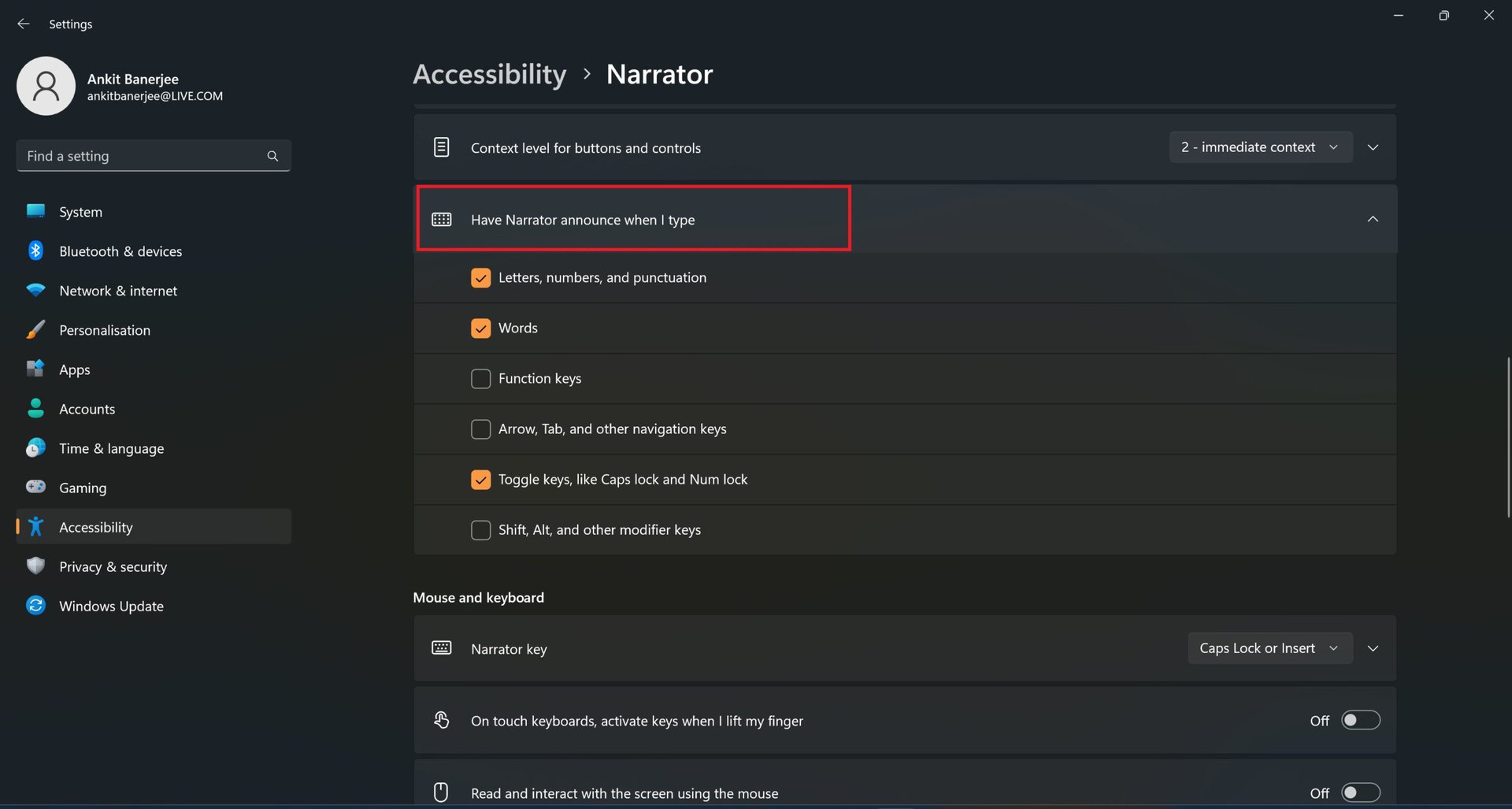
Finally, you can set what happens when you type on the keyboard. You’ll find these settings under Have Narrator announce when I type on Windows 11 and the Change what you hear when typing section on Windows 10. You can have the text-to-speech feature read out letters, numbers, punctuation, words, toggle keys (like Caps Lock and Num Lock), function keys, arrow keys, and modifier keys (like Shift and Alt).
Mouse and keyboard settings
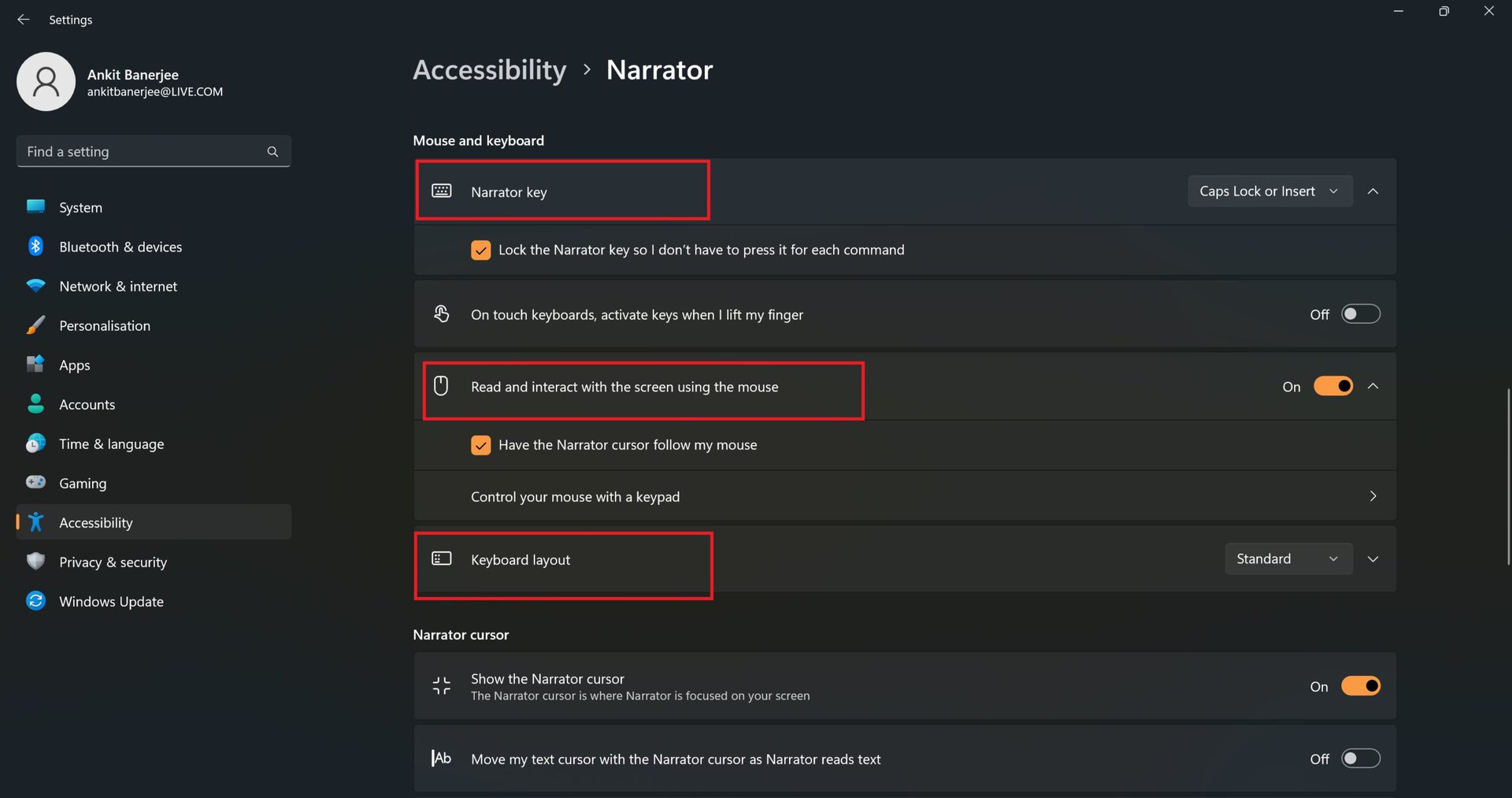
Narrator lets you set a Narrator Key to make it easier to use shortcuts for verbosity and navigation. You’ll find these settings under Change keyboard settings on Windows 10 and Mouse and keyboard on Windows 11.
You can use Caps Lock or the Insert button as the Narrator Key. It’s set to both options by default, but you can pick a specific button. To make it more convenient, you can also lock the Narrator Key in place so you don’t have to press it every time for a command.
You can also customize your keyboard if you want to use it only for commands and navigation. Windows 11 adds the option to use the mouse to read and interact with your screen. Enable the option to have the Narrator Cursor follow your mouse.
Narrator Cursor
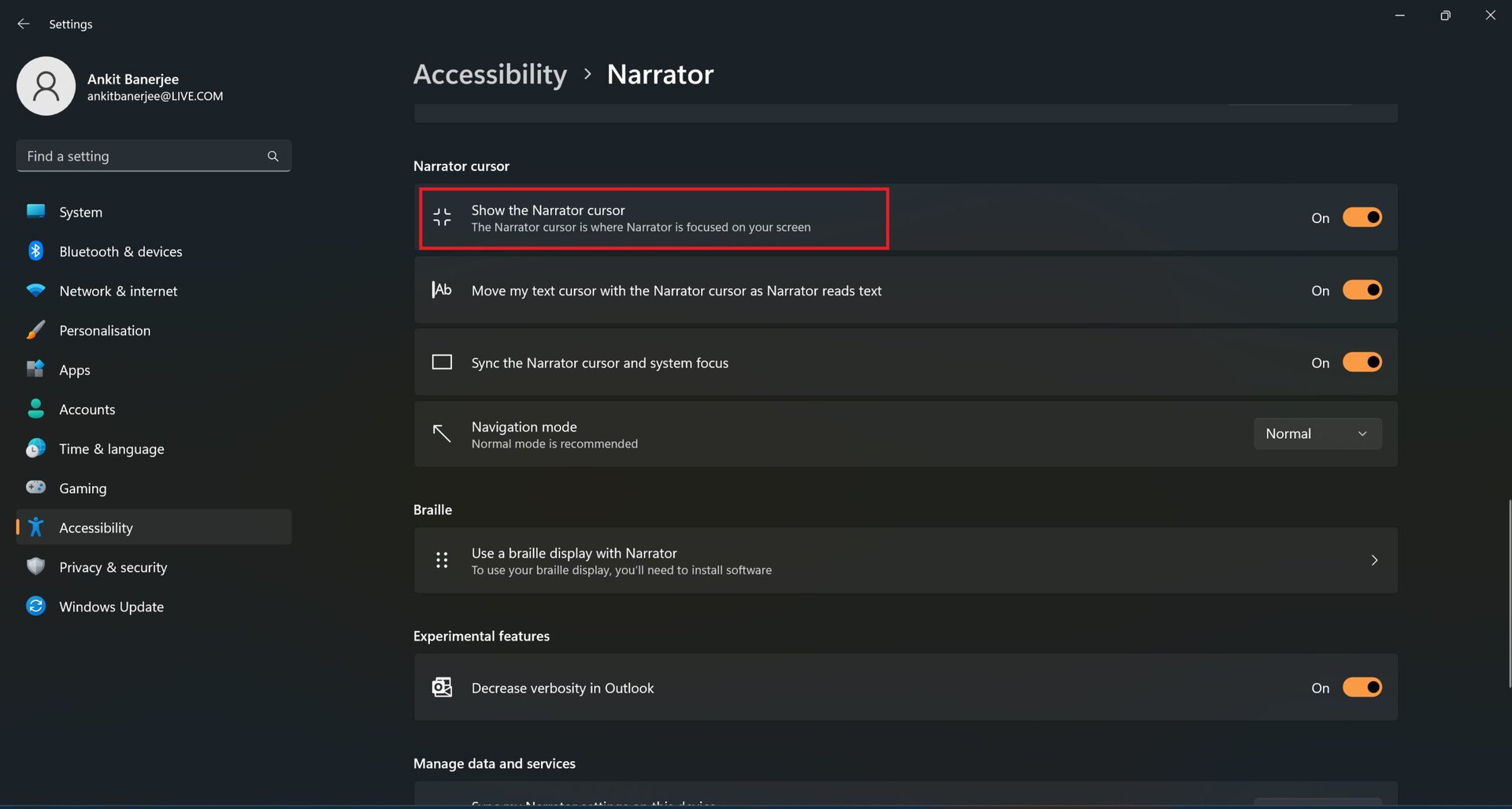
The Narrator Cursor is the blue box that moves across the text as it reads it, tells you about buttons and controls, or an overview of webpages and apps. You can choose to show or hide the cursor on your screen. If you’re typing text, you can enable the Move my text cursor with the Narrator cursor, so you can continue typing without resetting the text cursor position.
Other Windows Narrator settings
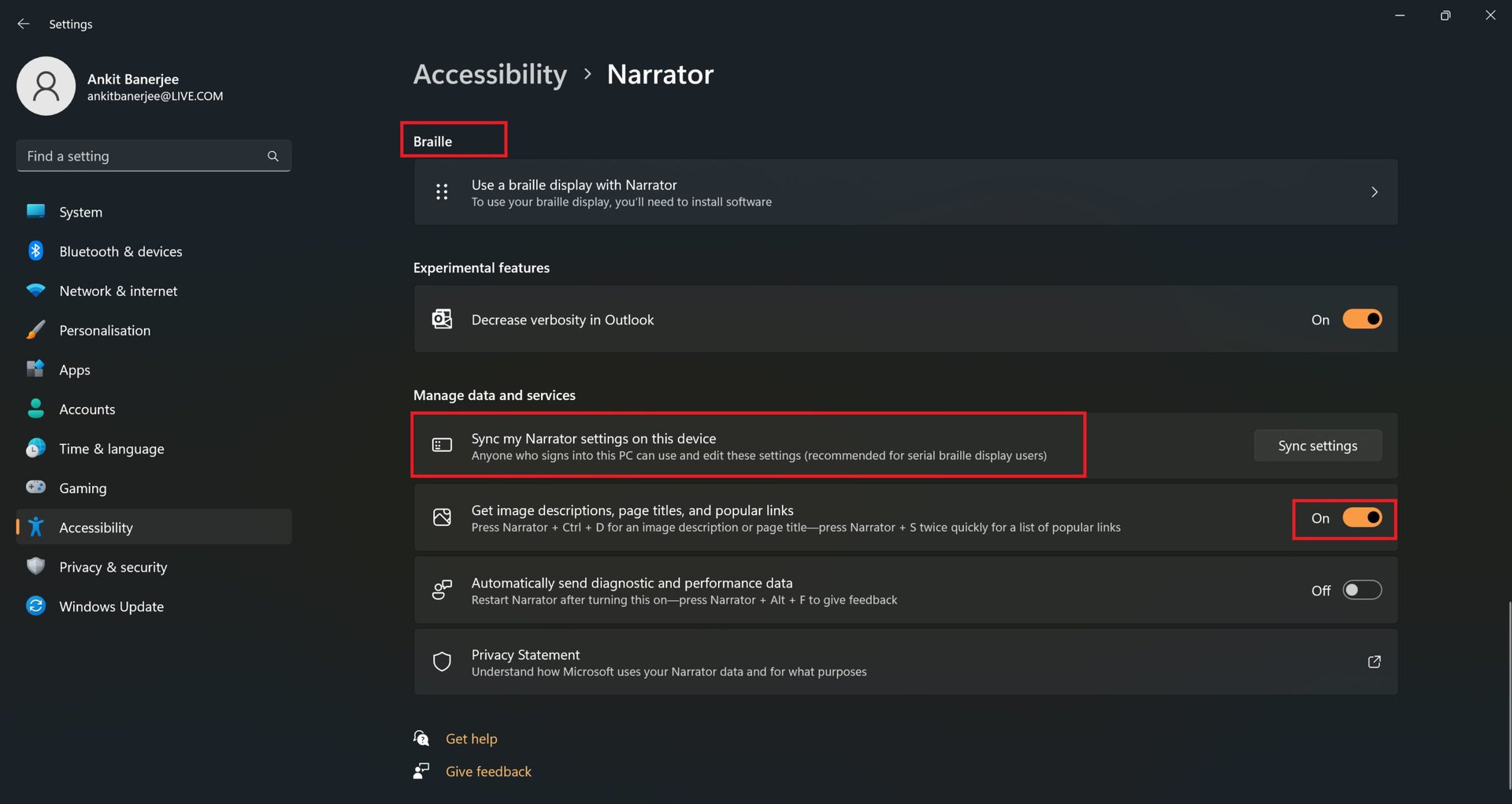
Click on Use a Braille display with Narrator to download the Braille keyboard and other software you need.
You might also want to enable Sync my Narrator settings on this device if you’re going to keep the same settings for every user. You can also hear image alt text, page titles, and link information by enabling the Get picture information setting in the Manage data and other services section.
How to change the text-to-speech voice
Change the text-to-speech voice
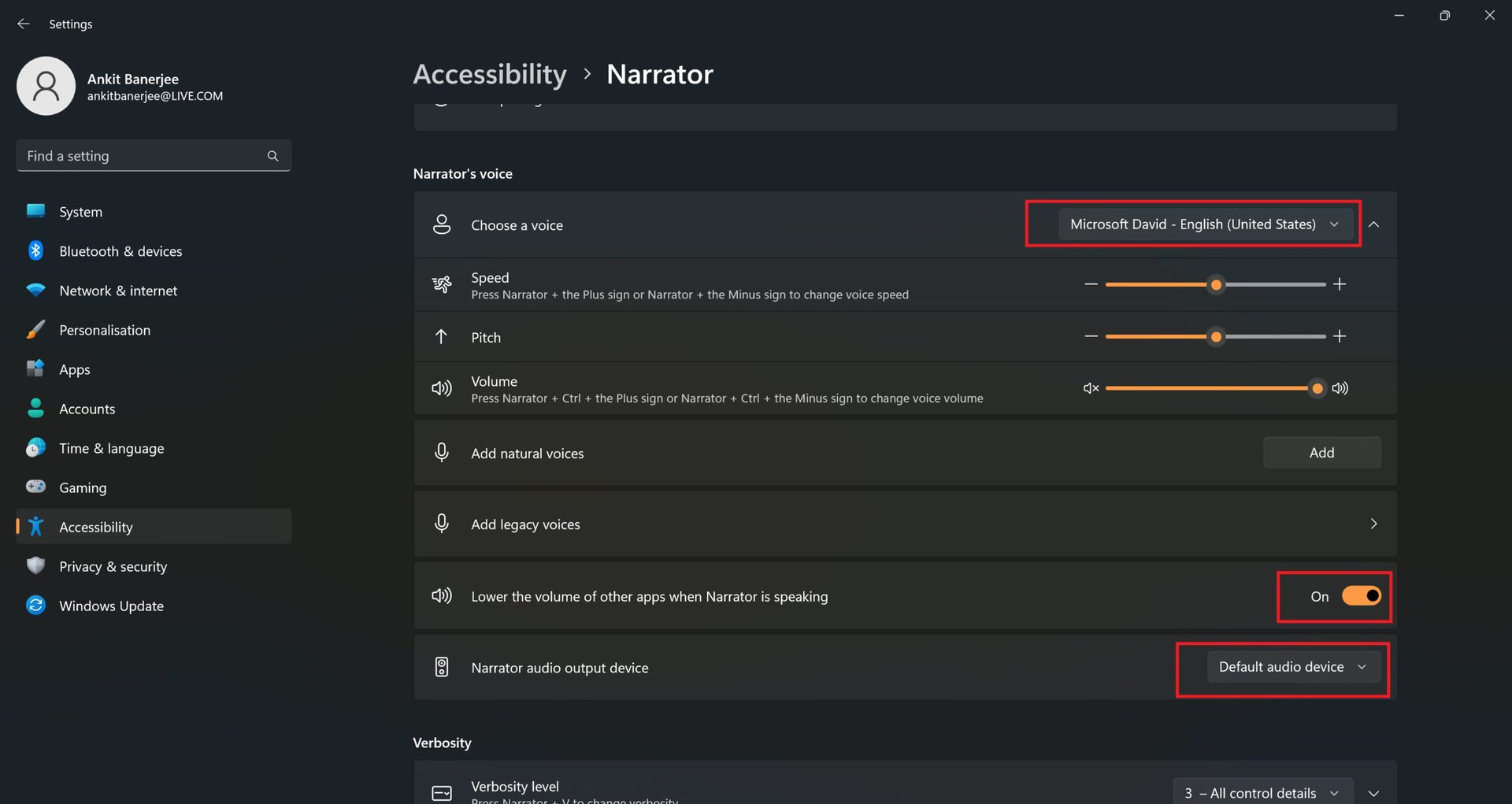
You’ll find voice settings under Personalize Narrator voice on Windows 10 and Narrator voice on Windows 11. Use the dropdown to choose from the available list of male or female voices for different languages and regional dialects. You can also set the reading speed, volume, and pitch to customize the default voice options. Select Lower the volume of other apps when Narrator is speaking to ensure you don’t miss out on anything.
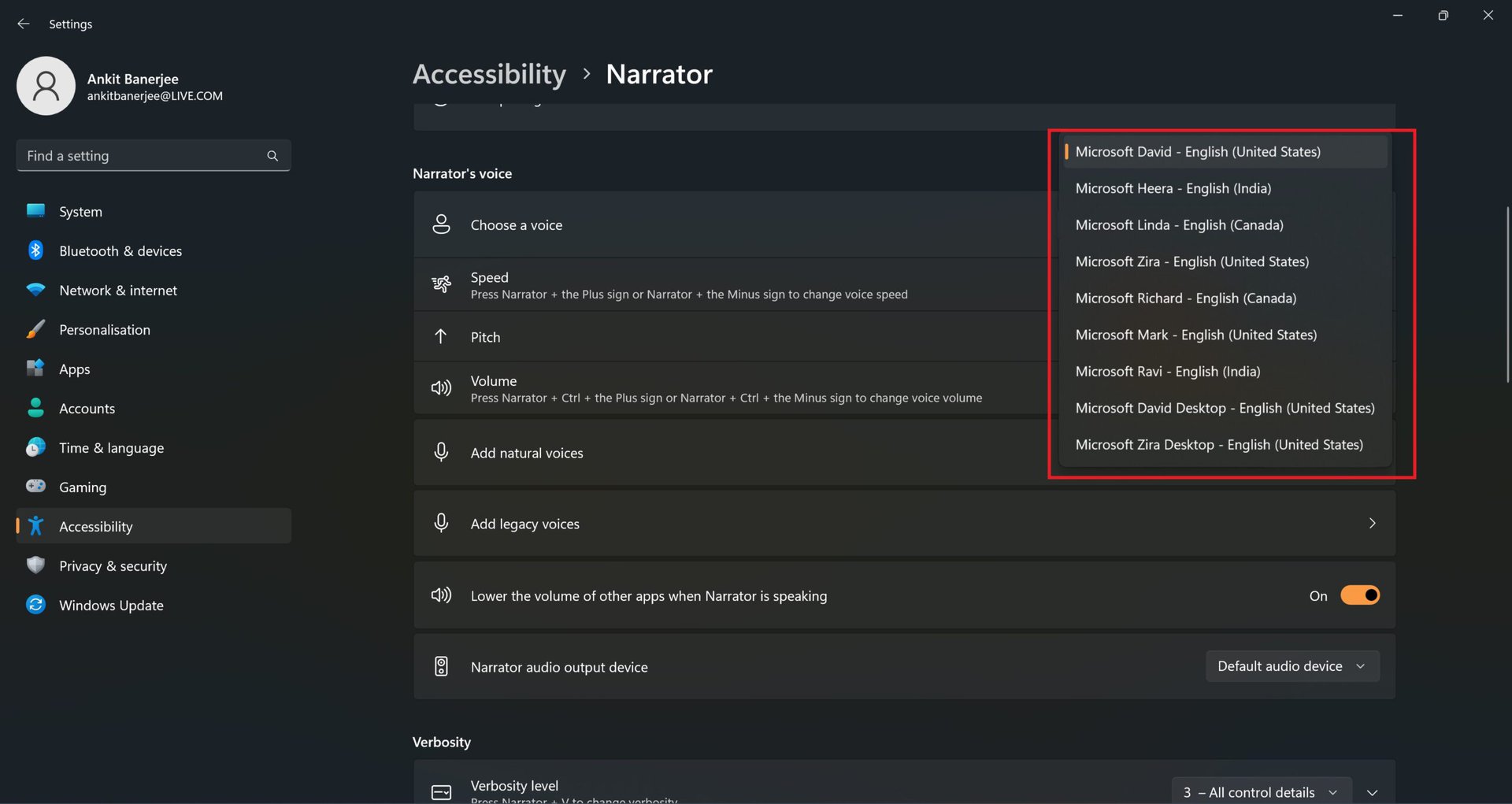
Windows 11 lets you add natural voices that are less robotic and flow better. Click on Add in the Natural voices section to preview and download the available options.
Add new text-to-speech voices and languages
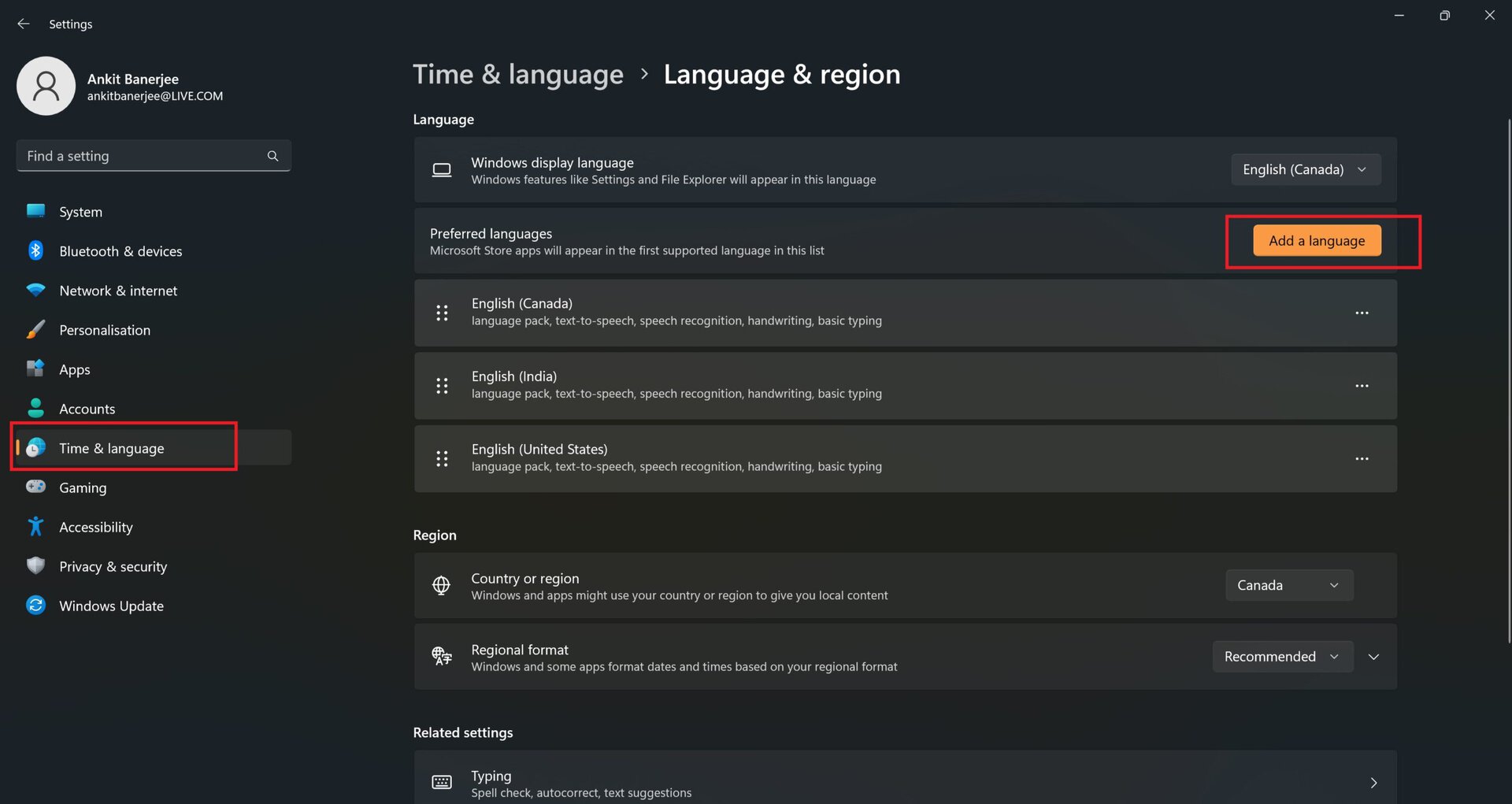
You’ll only find a few voice options available by default, but you can add more. Go to Settings > Time and language > Language (or Language and region on Windows 11) and click Add language.
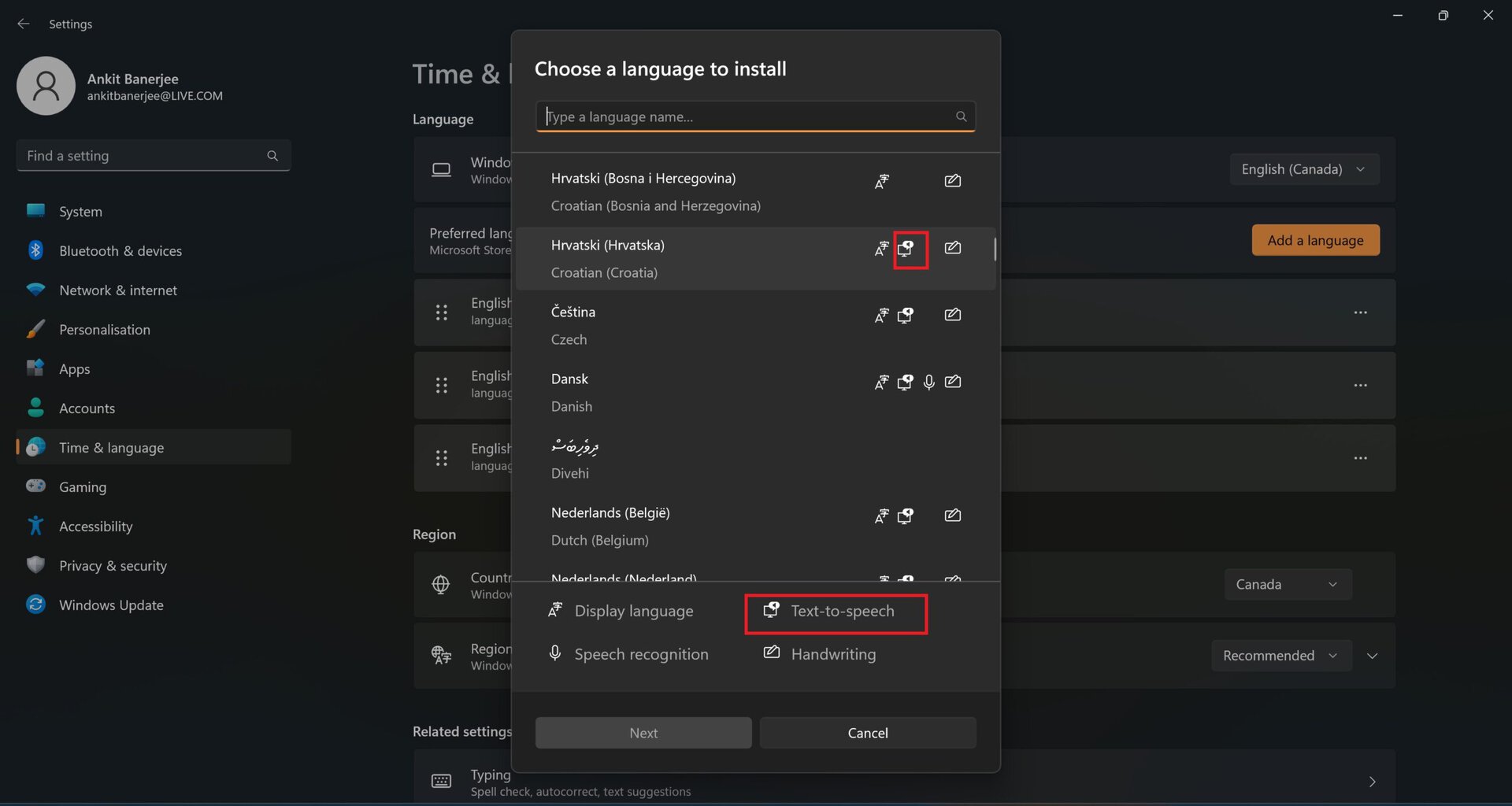
Type in the language you want, or scroll through the list. Look for the text-to-speech icon to see if you can use it with Windows Narrator. You’ll find the complete list of supported languages and voices here.
How to use text-to-speech on Windows
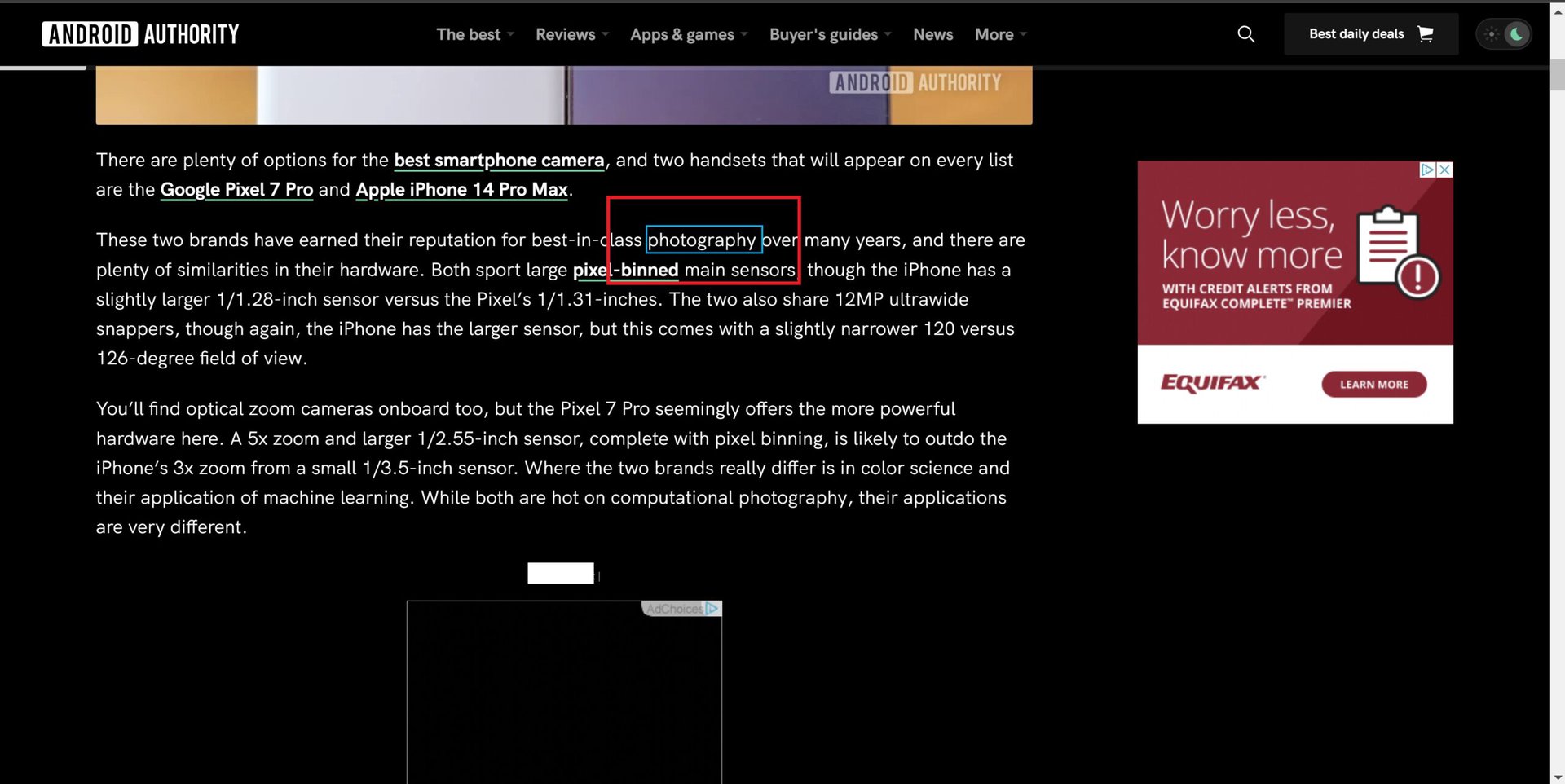
If you want to use text-to-speech all the time, go to go to Settings > Ease of Access > Narrator (on Windows 10), or Settings > Accessibility > Narrator (on Windows 11) and enable Narrator.
To use text-to-speech after opening specific web pages, emails, or documents, use the Windows key + Ctrl + Enter shortcut to enable Narrator. It will start reading the text from the beginning, or you can move your mouse to start listening from where you want to.
Check out the complete list of keyboard commands and shortcuts to make it easier to use text-to-speech on Windows. Here are a few useful ones to remember to help you get started. The Narrator Key is Caps Lock or Insert, depending on what you have set. If you’ve selected the Lock Narrator Key option in the settings, leave it out in the shortcuts below.
- Windows key + Ctrl + Enter: To enable or disable Narrator.
- Narrator + right/left arrow: Move to the following item (right arrow), and move to the previous item (left arrow).
- Narrator + F1: To show the entire commands list.
- Narrator + Enter: Do the primary action for buttons and controls.
- Narrator + Ctrl + Enter: This toggles Search mode.
- Narrator + F12: Read the current time and date.
- Narrator + S: Listen to a webpage summary.
- Ctrl + Narrator + plus sign/minus sign: To increase or decrease the Narrator volume.
- Narrator + C: Read the document.
- Ctrl + Narrator + U/I/O: Read the previous page (U), read the current page (I), or read the next page (O).
Windows Narrator FAQs
Yes, a version of it it has been included in all versions of Windows since Windows 2000.
Absolutely. It can read out any text that you see on your screen, including web pages.
Windows narrator is avaialble in a wide range of languages, including English, Spanish, French, German, Chinese, and many others. Find out how to change the language in the guide above.